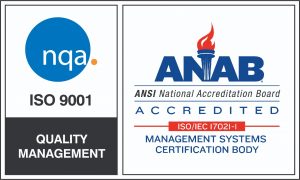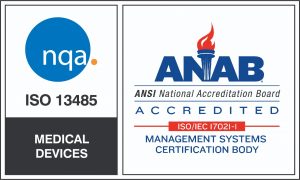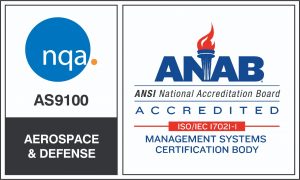 While several options exist, companies often wonder where to start when looking for a contract manufacturer. Making the choice to outsource is an extremely important decision. It’s crucial that organizations take the time necessary to interview several companies.
While several options exist, companies often wonder where to start when looking for a contract manufacturer. Making the choice to outsource is an extremely important decision. It’s crucial that organizations take the time necessary to interview several companies.
Businesses can evaluate potential partners using the following criteria.
Attitude
Above all else, it’s important to select a contract manufacturer that will go the extra mile to make sure your product launch is a success. Look for a CM that offers flexibility. Make sure the contract manufacturer is able and willing to change direction when the project requires it.
NPI Process
It’s extremely important that the contract manufacturer you choose has the experience, infrastructure, and NPI processes in place to ensure a smooth transition from prototype to volume manufacturing. During your interview, ask about their New Product Introduction (NPI) process.
Technical Expertise
When selecting a CM, it’s important to ensure they have the technical experience and skills needed to complete your project. It’s not unreasonable to ask to view examples of past projects the CM has completed with similar technical requirements.
Size
A lot of companies mistakenly believe that bigger equals better. This isn’t always the case, especially when it comes to contract manufacturing. Partnering with a large CM when you’re a small to medium-sized business could lead to problems down the line. Small to mid-size companies often feel they don’t get the attention they deserve from larger contract manufacturers. Alternatively, partnering with a very small CM could lead to problems if your needs are bigger than their facility and/or people can handle.
Location
Working with a CM that’s located in your general area makes communication and validation much easier. Meetings and project updates can take place face to face as opposed to over the phone. This increases visibility and confidence as you move into production.
Quality
Quick production time means nothing if the finished product doesn’t meet the quality standards of your organization and your customers. It’s important to look for a contract manufacturer with skilled staff and QMS certifications including ISO 9001 and AS9100.
Organizations looking to outsource part or all of their production should look for a contract manufacturer that meets all of the criteria mentioned above. Although your organization may have other requirements as well, these six areas can have a major impact on the overall success of your project.
Please contact us for information about our contract manufacturing services.
 Across the nation, contractors are seeing increasing demand for electronic devices in almost every industry. Used for numerous applications in the defense industry, the rapid expansion of high-tech military equipment and components has created high demand for electronics manufacturing.
Across the nation, contractors are seeing increasing demand for electronic devices in almost every industry. Used for numerous applications in the defense industry, the rapid expansion of high-tech military equipment and components has created high demand for electronics manufacturing. Companies looking to expand into new markets often face difficult decisions. While most of these organizations understand the benefits of expansion and the potential for increased revenue, many simply aren’t sure how to acquire the equipment, space, and people needed to grow their business. This is especially true for OEMs and other organizations looking to produce parts or products for the medical, defense, or aerospace industries. These industries have strict requirements, and organizations must prove that they have the equipment and skills needed to meet tight tolerances and produce extremely complex devices.
Companies looking to expand into new markets often face difficult decisions. While most of these organizations understand the benefits of expansion and the potential for increased revenue, many simply aren’t sure how to acquire the equipment, space, and people needed to grow their business. This is especially true for OEMs and other organizations looking to produce parts or products for the medical, defense, or aerospace industries. These industries have strict requirements, and organizations must prove that they have the equipment and skills needed to meet tight tolerances and produce extremely complex devices. 5-axis machining allows for the creation of complex parts or components. While 2-3 axis machines move the work piece in two different directions while the cutting tool moves up and down, 5-axis machines can rotate on two additional rotation axes. This allows the cutting tool to reach the part from all directions. When compared to 2 and 3-axis machines, 5-axis machines offer greater versatility, making them a useful tool to just about every industry.
5-axis machining allows for the creation of complex parts or components. While 2-3 axis machines move the work piece in two different directions while the cutting tool moves up and down, 5-axis machines can rotate on two additional rotation axes. This allows the cutting tool to reach the part from all directions. When compared to 2 and 3-axis machines, 5-axis machines offer greater versatility, making them a useful tool to just about every industry. Several industries rely on CNC machining for the creation of machined components. CNC machines produce complex parts quickly and with a high level of accuracy. Using computerized design processes, manufacturers can inspect parts and products in 3D prior to production. This helps locate issues, saving a considerable amount of time and money. CNC machine tools and accurate computer positioning ensure parts produced meet standards for both quality and consistency.
Several industries rely on CNC machining for the creation of machined components. CNC machines produce complex parts quickly and with a high level of accuracy. Using computerized design processes, manufacturers can inspect parts and products in 3D prior to production. This helps locate issues, saving a considerable amount of time and money. CNC machine tools and accurate computer positioning ensure parts produced meet standards for both quality and consistency.

